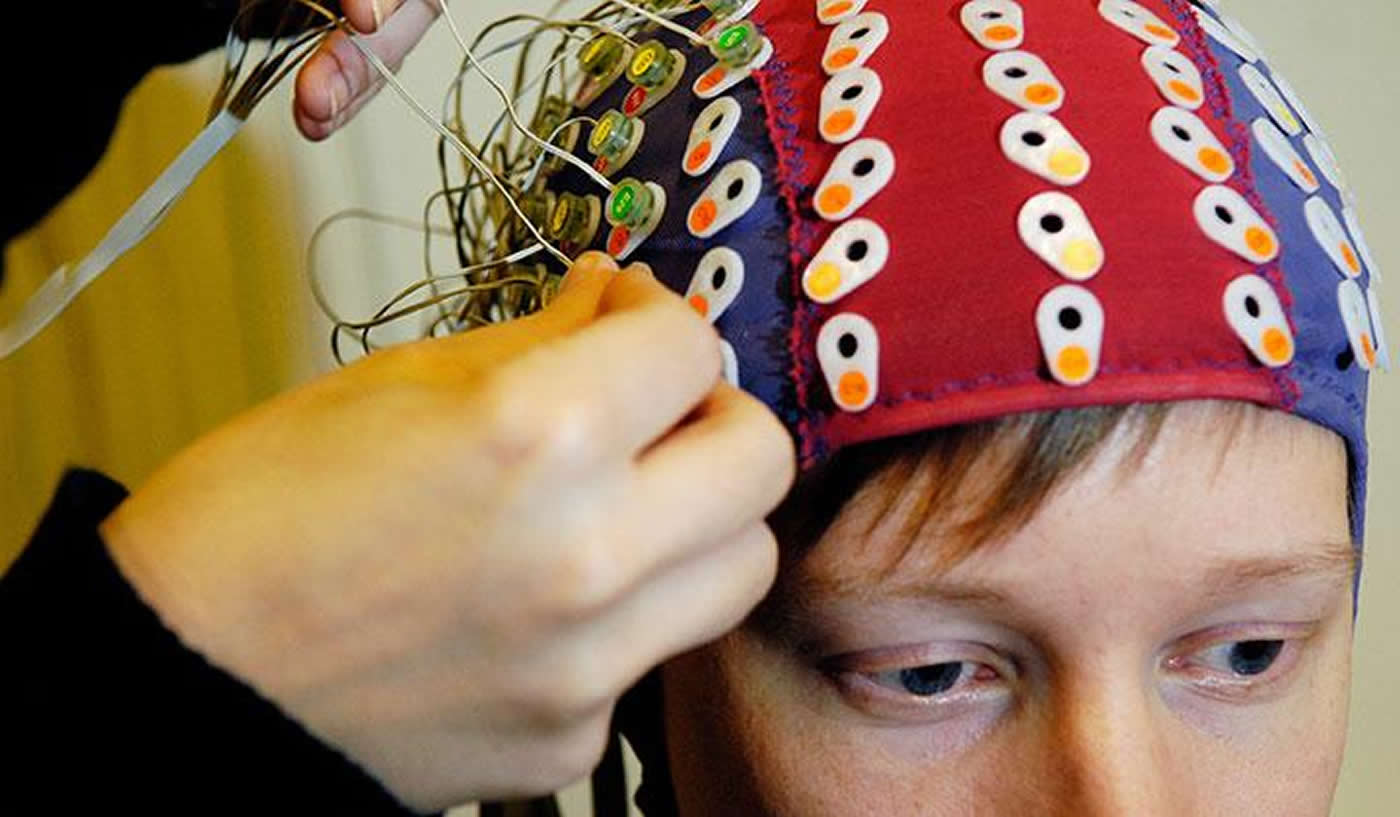Summary: People with dyslexia experience difficulties when acoustic variation was added to speech sounds. In the absence of the variation, neural speech sound processing was consistent between dyslexic and typical readers. Difficulties in detecting linguistically relevant information during acoustic variation in speech may contribute to a dyslexic person’s deficits in forming native language phoneme representations during infancy.
Source: University of Helsinki
A new study brings neural-level evidence that the continuous variation in natural speech makes the discrimination of phonemes challenging for adults suffering from developmental reading-deficit dyslexia.
This may compromise the learning of native language phonemes already at an early age for infants at familial risk for dyslexia.
Dyslexia is understood to stem from difficulties in phoneme processing. Natural speech has continuous acoustic variation, and the phonemes sound different depending on, for example, the word context or speaker identity. In order to effortlessly understand speech, the phonemes still have to be detected accurately.
“In our study, dyslexic participants had difficulties, particularly when acoustic variation was added to the speech sound stream. In the absence of this variation, neural speech sound processing did not differ between dyslexic and typical readers. This seems to reflect a difficulty in categorising speech sounds in the native language phoneme classes,” Dr Paula Virtala from the University of Helsinki explains.
Understanding the neural mechanisms of dyslexia will help in targeting and designing rehabilitation for children with language development or reading problems, and in preventing future difficulties early in infants and small children at familial risk.
EEG revealed differences
The study, which was published recently in Scientific Reports, was conducted by recording the neural activity of 18 dyslexic and 20 typically reading adults with electroencephalography (EEG).

The participants listened to a stream of Finnish speech sounds at various pitch levels passively, with their attention directed away from the stimulation, and actively, by pressing a response button when detecting a change in the speech sounds.
Auditory event-related potentials differed between the two groups in both conditions. Dyslexic participants were also less accurate in detecting the changes.
“These kinds of studies conducted in adults allow for longer recording sessions and a broader range of methods compared to studies in children. We can utilise these findings in our longitudinal DyslexiaBaby study,” Paula Virtala explains.
The DyslexiaBaby study is conducted in the Cognitive Brain Research Unit at University of Helsinki. It follows children’s language development, particularly in families with dyslexia. The study is conducted in collaboration with Helsinki University Hospital and the University of Jyväskylä.
About this neuroscience research article
Source:
University of Helsinki
Media Contacts:
Paula Virtala – University of Helsinki
Image Source:
The image is credited to Veikko Somerpuro.
Original Research: Open access
“Poor neural and perceptual phoneme discrimination during acoustic variation in dyslexia”. by P. Virtala, S. Talola, E. Partanen & T. Kujala.
Scientific Reports doi:10.1038/s41598-020-65490-3
Abstract
Poor neural and perceptual phoneme discrimination during acoustic variation in dyslexia
Whereas natural acoustic variation in speech does not compromise phoneme discrimination in healthy adults, it was hypothesized to be a challenge for developmental dyslexics. We investigated dyslexics’ neural and perceptual discrimination of native language phonemes during acoustic variation. Dyslexics and non-dyslexics heard /æ/ and /i/ phonemes in a context with fo variation and then in a context without it. Mismatch negativity (MMN) and P3a responses to phoneme changes were recorded with electroencephalogram to compare groups during ignore and attentive listening. Perceptual phoneme discrimination in the variable context was evaluated with hit-ratios and reaction times. MMN/N2bs were diminished in dyslexics in the variable context. Hit-ratios were smaller in dyslexics than controls. MMNs did not differ between groups in the context without variation. These results suggest that even distinctive vowels are challenging to discriminate for dyslexics when the context resembles natural variability of speech. This most likely reflects poor categorical perception of phonemes in dyslexics. Difficulties to detect linguistically relevant invariant information during acoustic variation in speech may contribute to dyslexics’ deficits in forming native language phoneme representations during infancy. Future studies should acknowledge that simple experimental paradigms with repetitive stimuli can be insensitive to dyslexics’ speech processing deficits.







